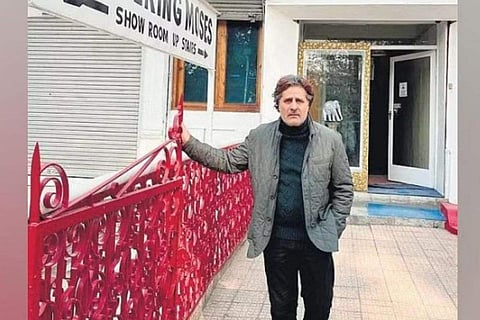From Persia, with love
You won’t find it on the internet, except the sundry article or social media. You’ll have to walk down a chinar-lined pathway overlooking the Jhelum River in the Bund in Srinagar, till you come to a large white building with an unusual name—Suffering Moses. It is one of Kashmir’s oldest shops, which began its recherché and colorful life as the purveyor of Persian and local crafts to the British in colonial times.
Its signature papier mâché pieces are testimony to the hours of painstaking effort Kashmiri craftsman devoted to developing and honing their trade, despite the low rate of return. Suffering Moses doesn’t suffer from the modern thirst for Insta-publicity, and stubbornly refuses to even have a website, unlike other art and crafts shops.
The Indo-Persian poet and scholar Amir Khusrau accurately described Kashmir as ‘heaven on Earth’ in the 13th century. Though he referred largely to its natural beauty, it was also around this time that the first Persian craftsmen made this verdant valley their home, beautifying it further with their unique arts and crafts. In 1840, an enterprising descendant of these first Persian settlers set up shop to offer the best of papier mâché furniture, jewellery and bric-a-brac.
Over time, his collection grew to include delicately embroidered pashmina shawls, home goods sewn in the petit point style (favoured by the British) and wooden filigreed wares. Muzaffar Sadiq Wani, the eighth-generation descendant of the original founder, justifies not going online, “We are not bulk producers. To preserve the quality of the art, it is necessary to focus on craftsmanship. We don’t want to compete with imitators online, who make cheap replicas. Our focus remains on keeping the art form alive.”
Though Wani wasn’t particularly drawn to this trade when younger, he couldn’t ignore its many charms. “Right from my childhood, I have had the privilege of witnessing artisans at work who were no less than the Behzads (a famous Persian painter of the 15-16th century) of their respective arts,” says Wani. What ultimately attracted him to the family business was the idea that they were actually preserving something valuable. “I feel proud to be the protector of a heritage that has passed through generations and a proud curator of these arts, presenting it to the rest of the world,” he asserts.
A finished papier mâché product is the culmination of two distinct art forms, made using the sakhtsaz and the naqash methods respectively. The former refers to the creation of the artefact and the latter to the painting of its surface. Paper, water, cloth and glue are used to create the structure in fine shapes of boxes, animals or other objects. The traditional paint is made of mineral, organic or vegetable base with gold and silver tints to add lustre. A thin layer of butter paper separates the object and the paint.
Wani’s regular roster consists of around 55-60 artisans, most of whom belong to families who have worked with his ancestors. They create the designs themselves, though Wani oversees the procedure assiduously, providing feedback when needed. His keen eye for maintaining quality is extremely important in the face of rising competition with mass-produced goods made in factories. Wani shares, “I meticulously examine the details of the artwork and the materials used. Mass production has led to numerous flaws being introduced over time, and they have had a lasting impact on the artisans and the overall value of these arts.
It is essential to maintain the quality of our work simply to preserve it from extinction.” When asked what the future holds for him and this art form, Wani responds, “I believe there is a soul in every piece we produce. Even in the future, passionate people will see and appreciate this intricacy of craftsmanship. We only urge people to be aware that this is a form of art and not a mere commodity made in Kashmir, so they must patronize the true artists.”

